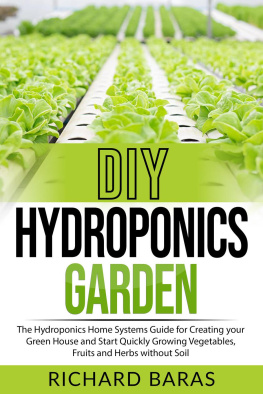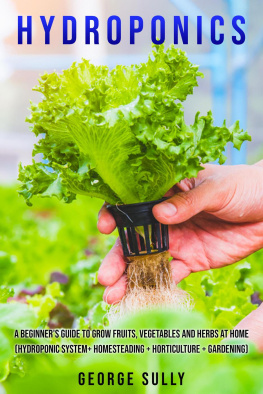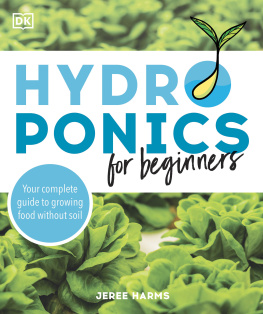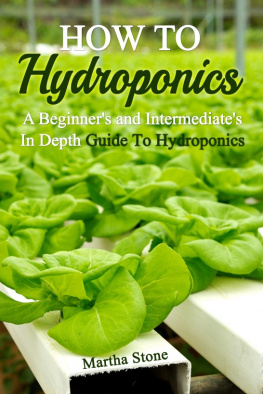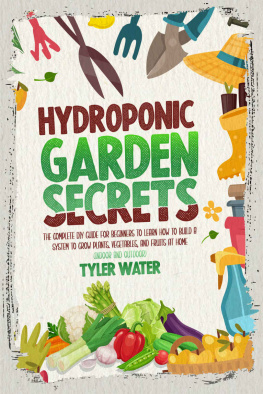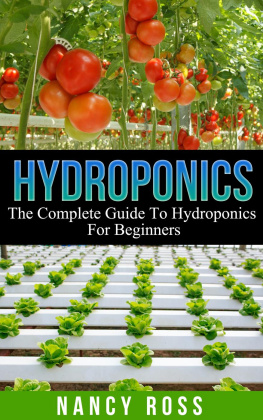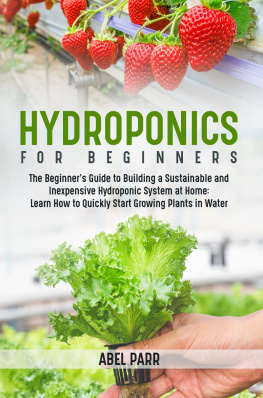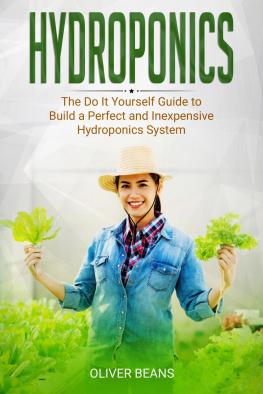Hydroponics For Beginners
Ultimate 2021 GUIDE TO GROW Indoor YOUR FAVORITE VEGETABLES WITHOUT SOIL. All Details to BUILD Your DIY HYDROPONICS SYSTEM AND CUDDLE YOUR LITTLE GIRLS
RICHARD GREEN
Copyright 2020 - All rights reserved.
The content contained within this book may not be reproduced, duplicated, or transmitted without direct written permission from the author or the publisher.
Under no circumstances will any blame or legal responsibility be held against the publisher, or author, for any damages, reparation, or monetary loss due to the information contained within this book. Either directly or indirectly.
Legal Notice:
This book is copyright protected. This book is only for personal use. You cannot amend, distribute, sell, use, quote, or paraphrase any part, or the content within this book, without the consent of the author or publisher.
Disclaimer Notice:
Please note the information contained within this document is for educational and entertainment purposes only. All effort has been executed to present accurate, up-to-date, and reliable, complete information. No warranties of any kind are declared or implied. Readers acknowledge that the author is not engaging in the rendering of legal, financial, medical, or professional advice. The content within this book has been derived from various sources. Please consult a licensed professional before attempting any techniques outlined in this book.
By reading this document, the reader agrees that under no circumstances is the author responsible for any losses, direct or indirect, which are incurred as a result of the use of the information contained within this document, including, but not limited to, errors, omissions, or inaccuracies.
Table of Contents
Introduction
The possibility of Hydroponics (gardening without soil) has been around since the hour of King Solomon. There are a couple of focal points with hydroponic gardening over customary gardening - for instance, the pace of growth of a hydroponic plant can be up to half quicker than a soil plant grown under similar conditions.
What's more, the yield of the plant is likewise more prominent!
The explanation behind this is the plants get their sustenance encouraged straightforwardly into their underlying foundations from nutrient-rich water. Since this water is so high in nutrient substance, the plant needn't bother with huge roots to look for nourishment. What's more, since the plant consumes less energy in growing roots, it has more energy accessible to be gainful over the root line! Hydroponically grown vegetables are robust, vigorous, and reliably dependable. This form of gardening is perfect and amazingly simple, and it requires next to no effort.
Hydroponic gardening is additionally advantageous to the environment. For instance, hydroponic gardening utilizes impressively less water than soil gardening considering the consistent reuse of the nutrient solutions. And furthermore, fewer pesticides are essential in hydroponic yieldsthey are not as fundamental. Furthermore, topsoil disintegration isn't even an issue since hydroponic gardening systems utilize no topsoil.
How precisely does a hydroponically grown plant get its sustenancenourishment it normally gets from the soil? All things considered, these nutrients come in fluid or powdered blends and can be bought at a hydroponic inventory store. Furthermore, like soil, hydroponic systems can be treated with organic or concoction nutrients. In any case, you should realize that an organic hydroponic system can be extensively more work to keep up since the organic mixes have a propensity cluster.
Hydroponic systems are normally categorized as aloof or dynamic. A functioning hydroponic system moves the nutrient solution with a siphon. A detached hydroponic system depends on the narrow activity of the growing medium or a wick.
The process of Hydroponics involves using a reservoir that has the plant roots suspended in a saltwater solution. The root system of the plant is then filled with this solution, and special nutrient fluid is fed into the system periodically to maintain the quality and quantity of the water inside the reservoir.
In an aloof system, the nutrient-rich solution is absorbed by the medium or the wick and went along to the plant's underlying foundations. Yet, a drawback with this technique is that they are typically excessively wet and don't supply enough oxygen to the root system for the best growth rates.
Hydroponic systems are additionally portrayed as recuperation or non-recuperation. In recuperation systems, the nutrient solution is re-flowed for reuse. In a non-recuperation system, nonetheless, the nutrient solution isn't recouped.
You might be uncertain of whether to purchase or construct a hydroponic system. On the off chance that you have a "designing personality" and need to manufacture one, consider getting one first just to get acquainted with the inward workings. Purchase a system that doesn't cost a ton of cash. It will give you a superior comprehension of how Hydroponics works, and the hands-on experience can be worth the expense of the system as you will have the option to reuse the parts when you choose to assemble one.
Hydroponics is not for everyone, so we understand. However, we have found that many people have a hard time imagining how to grow plants without soil. We hope this introduction will help you to consider the advantages hydroponics offers.
Chapter 1. Introducing Hydroponics
Hydroponics is so popular in part due to the fact it can be used just about anywhere with just about any amount of space. Whether you have just a desktop, a shelf, or even a large plot of land, you can create a hydroponic set-up for yourself. You can do this in just about any space and in any sort of climate. Not only will that set-up allow you to do everything with less space, but you will also be able to use significantly less water.

Within this, we are going to take a look at what the fundamentals of hydroponic gardening are so you can then begin to make use of them yourself. We will go over how it tends to allow for the transfer of everything the plants will need to grow, as well as how it can be used to create a sustainable and lucrative way in which you are going to grow your own plants at any price point. Though you can absolutely spend large amounts of money, it is not a requirement, and you can learn to use these methods in ways that are sustainable, both environmentally and for your wallet.
What Hydroponics Is
Hydroponics is a form of soilless gardening. Now, you may be thinking that soil is necessary for plants to growafter all, that is where they get their nutrients. However, you can replace it with the use of a nutrient-rich solution within the water. With this solution provided to the plants through their roots, they are actually able to begin growing incredibly efficiently. They come into direct contact with the proper amount of the nutrients that they need, which means that they are not limited by what they happen to get naturally over time.
They can precisely absorb what they need to avoid running into the problem of simply not having enough of what they need to grow. This means they can grow quicker and stronger. Oftentimes, in Hydroponics, you will see the plants begin to grow better. They grow up to 25% quicker, allowing you to produce sooner, and the production is usually boosted up to 30% compared to the same plants that have grown within the soil.
These statistics are incredibly compelling for this processit implies that ultimately, the plants you decide to grow within hydroponic systems are going to grow quicker and produce more, which can then be either harvested for yourself or used to sell. You will then have produced sooner.









